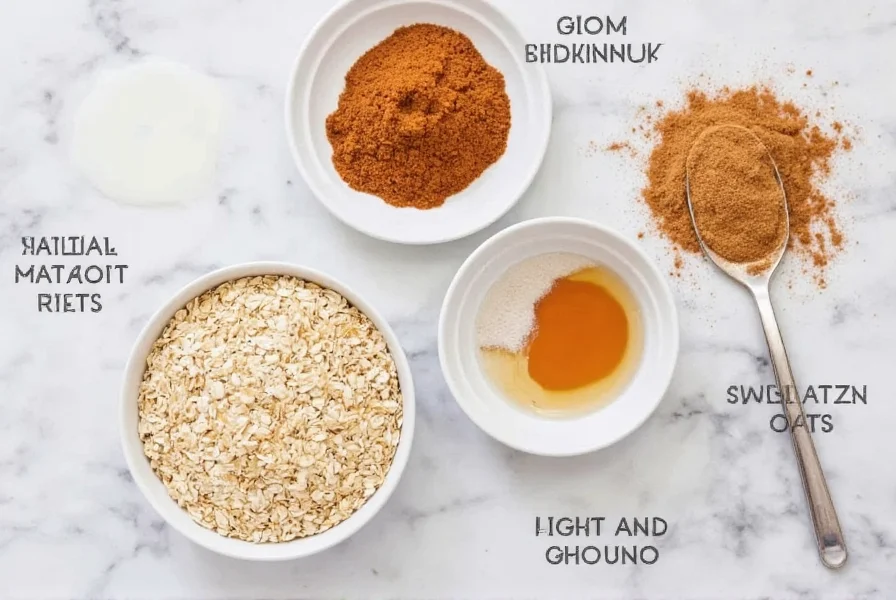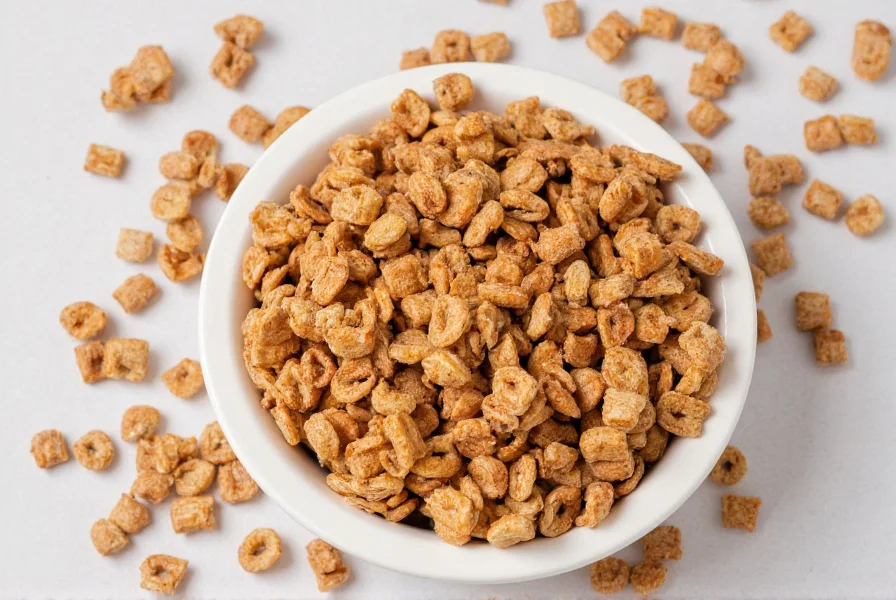Cinnamon cereals represent one of the most beloved breakfast categories, combining the warm spice of cinnamon with crunchy toasted grains for a satisfying morning meal. While many people grew up with iconic brands like Cinnamon Toast Crunch, the category has expanded significantly to include both nostalgic favorites and newer health-conscious options that maintain that distinctive cinnamon flavor while reducing sugar content.
The Evolution of Cinnamon Cereals
The history of cinnamon cereals dates back to the early 1980s when Quaker Oats introduced Cinnamon Life, followed by General Mills' Cinnamon Toast Crunch in 1985. These cereals quickly gained popularity for their distinctive "crunch" and sweet cinnamon flavor that appealed to both children and adults. The original formulations focused on maximum flavor impact with higher sugar content, typically around 10-12 grams per serving.
Over the decades, consumer preferences have shifted toward more balanced nutritional profiles, prompting manufacturers to develop reduced-sugar versions and whole grain alternatives. Today's cinnamon cereals market includes options made with whole grains, less added sugar, and even gluten-free varieties that maintain the essential cinnamon flavor profile while addressing modern dietary concerns.

Popular Cinnamon Cereal Brands Compared
| Brand | Serving Size | Sugar (g) | Fiber (g) | Whole Grains | Notable Features |
|---|---|---|---|---|---|
| Cinnamon Toast Crunch | 3/4 cup (38g) | 10 | 1 | Partially | "Crunch" center, classic flavor |
| Quaker Cinnamon Life | 1 cup (37g) | 9 | 3 | Yes | Higher fiber, heart-healthy claim |
| Barbara's Bakery Cinnamon Puffins | 3/4 cup (34g) | 6 | 3 | Yes | Organic, lower sugar option |
| Three Wishes Cinnamon | 55g | 4 | 6 | Yes | High protein, grain-free, low sugar |
Nutritional Profile Analysis
When evaluating cinnamon cereals nutrition facts, sugar content remains the primary concern for health-conscious consumers. Traditional varieties typically contain 9-12 grams of sugar per serving, which represents 20-25% of the American Heart Association's recommended daily limit for added sugars. The newer generation of cinnamon cereals has addressed this by reducing sugar to 4-6 grams per serving while increasing fiber content to 3-6 grams.
Fiber content varies significantly across brands, with some traditional options providing only 1 gram per serving while newer health-focused varieties offer 3-6 grams. Whole grain content has also improved, with many modern cinnamon cereals using 100% whole grain oats or alternative grains like cassava and chickpeas in grain-free options. Protein content generally ranges from 2-4 grams per serving, though some specialty brands have increased this to 8-10 grams through added plant proteins.
Cinnamon Cereals vs Other Flavored Options
Compared to other popular flavored cereals like frosted flakes or honey nut varieties, cinnamon cereals typically contain slightly less sugar while offering more complex flavor profiles. The spice element provides satisfaction without relying solely on sweetness, which some consumers find makes cinnamon varieties more satisfying with smaller portions.
Unlike chocolate cereals which often contain additional unhealthy ingredients like artificial colors and flavors, most cinnamon cereals use relatively simple ingredient lists featuring cinnamon, sugar, and grains. This simpler formulation has helped cinnamon cereals maintain popularity even as consumers become more ingredient-conscious.
Creative Ways to Enjoy Cinnamon Cereals
Beyond the traditional bowl with milk, cinnamon cereals offer versatile culinary applications. Many home chefs use crushed cinnamon cereal as a flavorful coating for baked chicken or fish, creating a sweet-savory crust that children particularly enjoy. The cereal also works well as a topping for yogurt parfaits, adding both texture and flavor without requiring additional sweeteners.
For dessert applications, cinnamon cereal provides an excellent base for no-bake treats and pie crusts. When combined with melted butter and pressed into a pan, it creates a flavorful foundation for cheesecakes or fruit tarts. Some creative bakers even incorporate whole cereal pieces into muffin or quick bread batters for cinnamon-flavored pockets throughout the finished product.

Simple Homemade Cinnamon Cereal Recipe
For those seeking healthier cinnamon cereal options without artificial ingredients, a homemade version offers complete control over ingredients and sugar content. This basic recipe yields approximately 4 servings:
- 2 cups rolled oats
- 1 tablespoon coconut oil, melted
- 1½ tablespoons pure maple syrup
- 1½ teaspoons ground cinnamon
- ¼ teaspoon sea salt
- ½ teaspoon vanilla extract
Preheat oven to 300°F (150°C). Mix all ingredients in a bowl until oats are evenly coated. Spread on a parchment-lined baking sheet and bake for 20-25 minutes, stirring every 7-8 minutes, until golden and crisp. Cool completely before storing in an airtight container. This version contains approximately 5 grams of natural sugar per serving and 4 grams of fiber, making it a significantly healthier alternative to many commercial options while delivering that beloved cinnamon flavor.
Frequently Asked Questions
Are cinnamon cereals considered healthy breakfast options?
Cinnamon cereals range from moderate to poor nutritional profiles depending on the brand. Traditional varieties like Cinnamon Toast Crunch contain 10g of sugar per serving with only 1g of fiber, while newer options like Quaker Cinnamon Life offer 3g of fiber with 9g of sugar. Healthier alternatives include Barbara's Cinnamon Puffins (6g sugar, 3g fiber) and grain-free options like Three Wishes (4g sugar, 6g fiber). For the healthiest choice, look for varieties with at least 3g of fiber and under 7g of sugar per serving.
What makes cinnamon cereals different from other flavored cereals?
Cinnamon cereals typically contain less sugar than chocolate or fruit-flavored cereals while offering more complex flavor from the spice component. Unlike many flavored cereals that rely on artificial colors and flavors, most cinnamon varieties use relatively simple ingredient lists featuring natural cinnamon. The spice element provides satisfaction without requiring excessive sweetness, which many consumers find makes cinnamon varieties more satisfying with smaller portions compared to sweeter alternatives.
How can I reduce the sugar content when eating commercial cinnamon cereals?
To reduce sugar intake with commercial cinnamon cereals, try mixing half regular cereal with half unsweetened whole grain cereal like plain shredded wheat or bran flakes. Another effective strategy is using smaller portion sizes (½ cup instead of the recommended serving) and adding fresh fruit like sliced bananas or berries for natural sweetness. Choosing milk alternatives like unsweetened almond milk instead of dairy can also help reduce overall sugar content in your breakfast.
Are there gluten-free cinnamon cereal options available?
Yes, several gluten-free cinnamon cereal options exist, including Three Wishes Cinnamon, Catalina Crunch Cinnamon, and Nature's Path Gluten Free Cinnamon Sunrise. These alternatives typically use grain-free bases like cassava, chickpea flour, or gluten-free oats, with most containing 4-6 grams of sugar per serving and 3-6 grams of fiber. While they maintain the cinnamon flavor profile, texture may differ slightly from traditional wheat-based cinnamon cereals.











 浙公网安备
33010002000092号
浙公网安备
33010002000092号 浙B2-20120091-4
浙B2-20120091-4